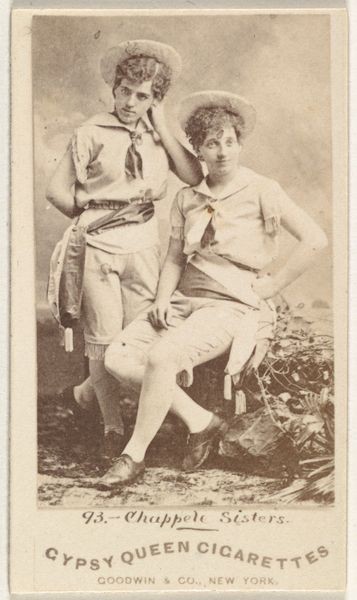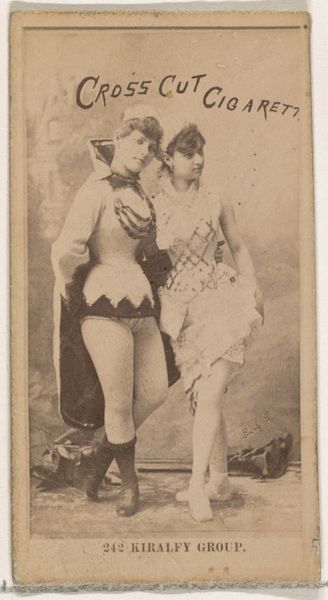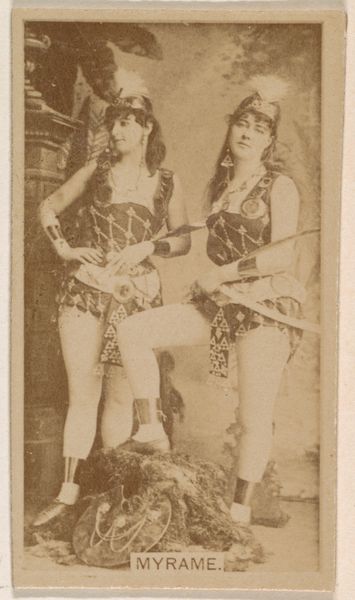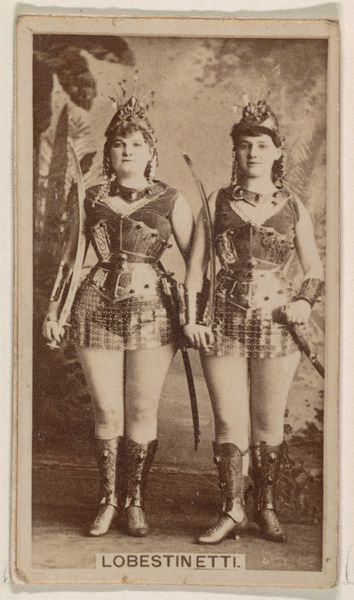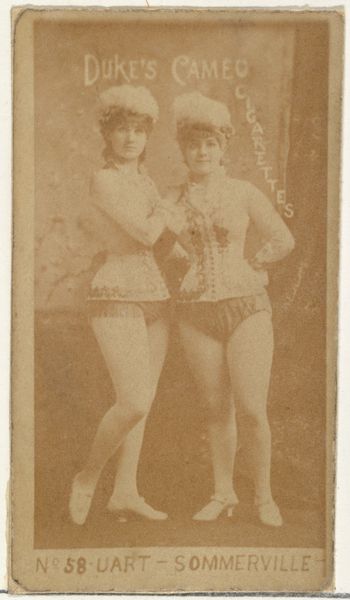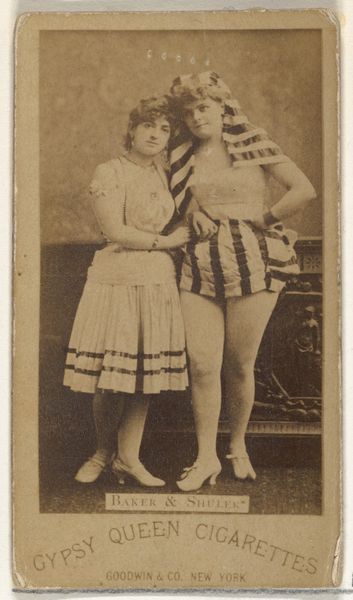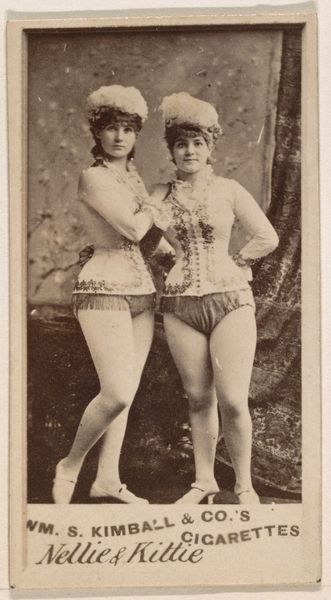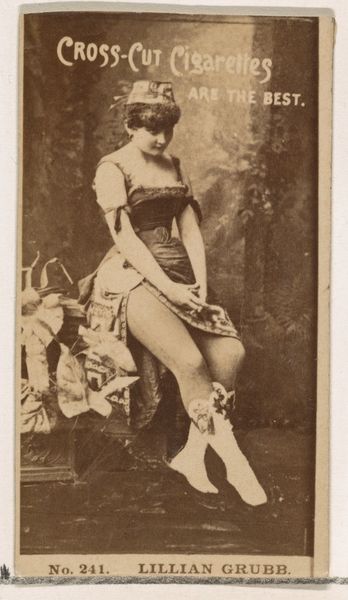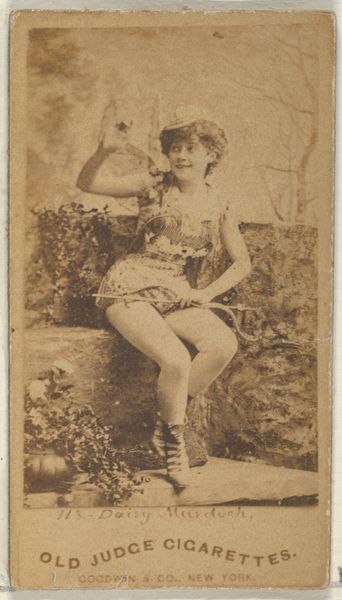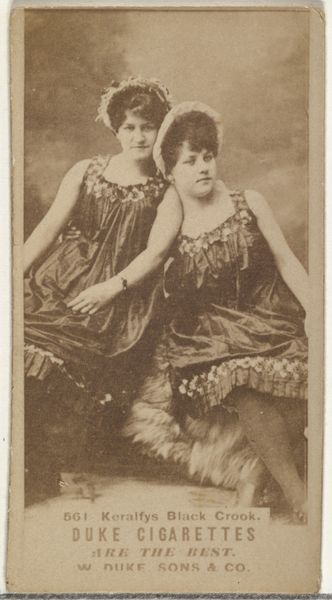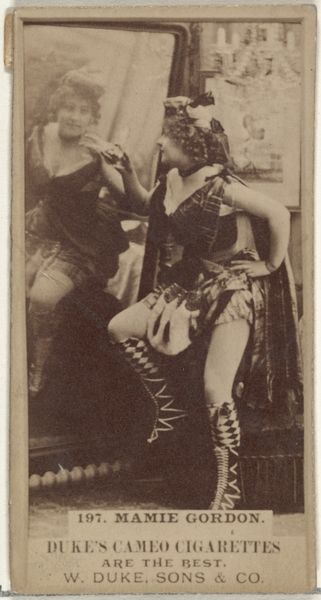
Miss H. Nias, from the Actresses series (N245) issued by Kinney Brothers to promote Sweet Caporal Cigarettes 1890
0:00
0:00
print, photography
#
portrait
# print
#
photography
#
orientalism
#
19th century
#
genre-painting
Dimensions: Sheet: 2 1/2 × 1 7/16 in. (6.4 × 3.7 cm)
Copyright: Public Domain
Editor: So, here we have "Miss H. Nias, from the Actresses series," created in 1890 by Kinney Brothers, printed using photography. I find the theatricality of this portrait interesting, but the promotional aspect, that it was issued to promote cigarettes, feels a bit strange to me. How do you interpret this work, considering it's a print designed for commercial purposes? Curator: This piece, at its core, is about production and consumption. The Kinney Brothers Tobacco Company used photographs, a relatively new technology at the time, to mass produce images of actresses, embedding them within cigarette packaging. What does it mean to transform human likeness—an actress’s identity—into a consumer good? How did this affect their labor, turning performances into images divorced from the original context? Editor: It’s almost like early advertising blurring lines of art, entertainment and commodities. Was this common for other products? Curator: Absolutely. Consider the conditions under which these prints were produced. What sort of wages were these actors earning, and what portion of the profits went to the company itself, capitalizing on their image? How does the photographic process, then considered quite advanced, affect perceptions of value? What does it say about our consumerist culture then and now? Editor: So, it's not just about a pretty picture; it's about understanding the labor, materials, and production behind it, all wrapped up in the context of a burgeoning consumer society. That’s really interesting to think about. Curator: Precisely. Examining these prints encourages us to delve into the complex relationships between labor, materials, consumption, and art during this era of mass production, thus challenging the perception of ‘art’ as something purely aesthetic. It compels us to consider power dynamics between performers and industrialists in the commodification process. Editor: I see this photograph quite differently now. Thinking about it from a materialist perspective, examining its means of production, makes it far more complex and insightful than just a promotional picture of an actress. Thanks for sharing your insight.
Comments
No comments
Be the first to comment and join the conversation on the ultimate creative platform.
